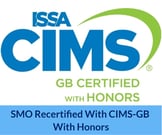.jpg?width=1000&height=667&name=Blog%20Detail%20Image%20(11).jpg)
In recent years, the cleaning industry has undergone a significant transformation, propelled by advancements in robotics and technology. Traditional cleaning methods are being replaced or augmented by innovative solutions that promise efficiency, precision, and sustainability. From robotic vacuum cleaners to automated floor scrubbers, these technologies are revolutionizing cleanliness in all settings.Let's explore the impact of robotics and technology on the cleaning industry and how these innovations are reshaping the way we maintain cleanliness.
1. Commercial and Industrial Cleaning Solutions:
In commercial and industrial settings, where cleanliness is crucial for safety and compliance, robotics and technology play an increasingly vital role. Automated floor scrubbers equipped with advanced sensors and mapping capabilities can efficiently clean large areas such as warehouses and factories. These machines reduce the need for manual labor, improve cleaning consistency, and optimize water and chemical usage, leading to cost savings and environmental benefits.
2. Smart Cleaning Systems:
The integration of artificial intelligence (AI) and Internet of Things (IoT) technologies has led to the development of smart cleaning systems that are capable of predictive maintenance and optimization. These systems utilize sensors and data analytics to monitor equipment performance, detect potential issues, and schedule maintenance tasks proactively. By leveraging real-time data and predictive algorithms, facility managers can ensure optimal cleaning efficiency, minimize downtime, and extend the lifespan of cleaning equipment.
3. Sustainable Cleaning Practices:
In addition to efficiency and effectiveness, robotics and technology are driving sustainability in the cleaning industry. Electrically powered robotic cleaners produce fewer emissions compared to traditional cleaning equipment powered by fossil fuels. Moreover, innovations in cleaning solutions and chemicals are focusing on eco-friendly alternatives that minimize environmental impact without compromising cleaning performance. By adopting sustainable cleaning practices, organizations can reduce their carbon footprint and contribute to a cleaner, healthier planet.
4. Future Trends and Challenges:
Looking ahead, the future of robotics and technology in the cleaning industry holds immense potential. Advancements in AI, machine learning, and robotics will lead to even smarter, more autonomous cleaning solutions capable of adapting to diverse environments and tasks. However, challenges such as initial investment costs, maintenance requirements, and potential job displacement need to be addressed. Additionally, ensuring data security and privacy in connected cleaning systems will be paramount as technology continues to evolve.
Robotics and technology are transforming the cleaning industry, offering innovative solutions that improve efficiency, sustainability, and cleanliness across residential, commercial, and industrial sectors. From robotic vacuum cleaners to smart cleaning systems, these advancements are reshaping traditional cleaning practices and paving the way for a more automated, data-driven approach to cleanliness. As technology continues to advance, the cleaning industry will undoubtedly witness further innovation, driving towards a future where cleanliness is achieved with greater ease, effectiveness, and sustainability.
If you would like to learn more about robotics and technology in cleaning, as well as get a free consultation for your facility, contact Supreme Maintenance Organization today.


%20(1).webp?width=220&height=135&name=Untitled%20design%20(23)%20(1).webp)


.png?width=180&height=138&name=Untitled%20design%20(25).png)


